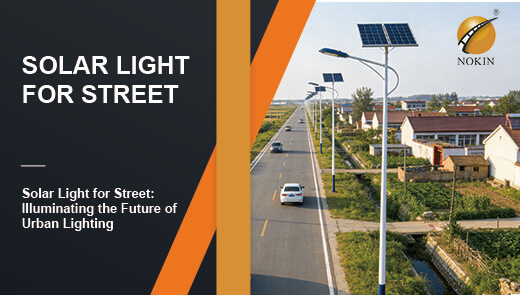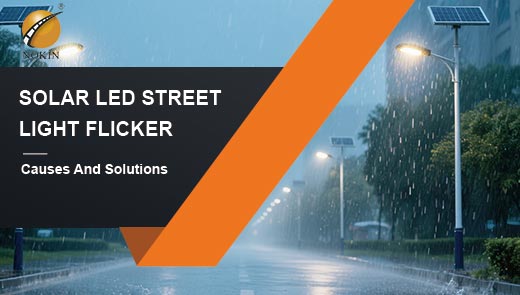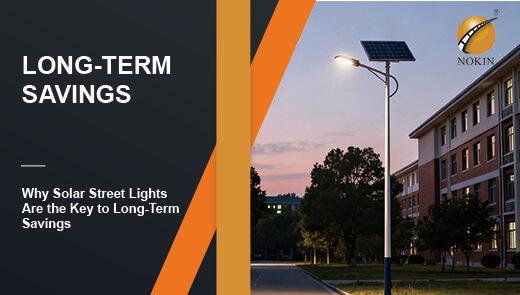Which Street Lighting System Reigns Supreme in Africa
Africa is undergoing rapid urbanization, but energy infrastructure is lagging and more than 600 million people still live without electricity. Traditional grid-powered street lights in Africa face frequent power outages and high electricity costs, while diesel generator lighting is difficult to popularize due to pollution and high operation and maintenance costs. Against this backdrop, solar LED street lights, with their independent power supply and low-carbon and environmentally friendly features, have become the optimal solution for urban and rural lighting in African countries.
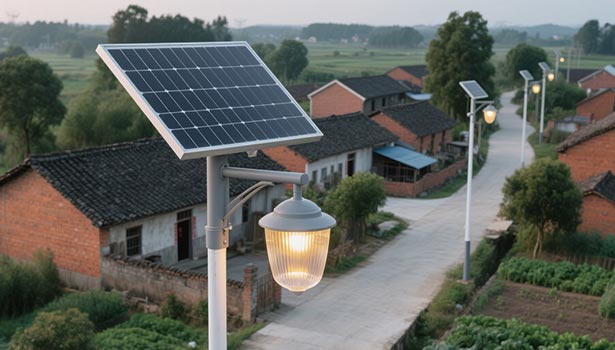
Why are Solar Street Lights Perfect for Africa?
Improved visibility and Road Safety
With independent photovoltaic power supply system, solar street lights completely break the dependence on traditional power grids, even in areas with frequent power cuts such as Lagos, Nigeria, they can realize continuous illumination throughout the night through energy storage batteries. Local test data show that after the installation of solar-powered LED street lights, the rate of traffic accidents at night decreased by 30% year-on-year, thanks to the high luminous efficacy of the LED light source of 150lm/W (nearly doubled compared with that of the traditional high-pressure sodium light of 80lm/W), together with the precise light distribution design of the optical lenses, which can not only focus the light onto the road surface to reduce the interference of the glare on the drivers, but also strengthen the pedestrian silhouette through the contrast of light and darkness.
It also enhances the recognition of pedestrians' silhouettes, potholes and other obstacles through the contrast of light and darkness. In Africa's complex traffic environment, whether it's motorized traffic on urban main roads or people and animals mixing on rural dirt roads, this stable and efficient lighting system is restructuring the safety ecology of nighttime travel through its technological advantages, and reducing the causes of accidents from the essence of the light source.
Cost-effective and Sustainable Lighting Solution
|
Comparison Dimension |
Solar LED Street Light |
Traditional Street Light |
|
Initial Investment |
Higher ($300–500 per unit) |
Lower ($150–300 per unit) |
|
5-Year Maintenance Cost |
$50–100 per unit (mainly battery replacement) |
$200–300 per unit (electricity + maintenance) |
|
Energy Consumption |
Zero electricity cost |
Annual electricity cost $80–120 per unit |
|
Carbon Emissions |
0.1 kg CO₂ / unit・year |
50 kg CO₂ / unit・year |
Although the initial investment in solar street lights is 40% higher than that of traditional street lights, 60% of the operating costs can be saved within five years. Behind this data is Africa's unique sunshine conditions - the average annual sunshine duration of more than 2,000 hours, up to 3,000 hours in the Sahara region, sufficient solar energy resources for the system to provide sustainable energy support. For financially constrained African municipalities, this “high upfront investment, low long-term consumption” model is more in line with the needs of sustainable development.
Enhancing Security and Community Well-being
The installation of solar street lights in the center of Accra, Ghana, has reduced nighttime crime by 25%, making the street lights a natural “policing post. Bright public spaces have also created a night-time economy - in some Tanzanian villages, street lighting has extended market hours and increased monthly income for traders by an average of 15 percent. Some smart street lights also incorporate CCTV cameras and emergency call buttons, such as the pilot program in Johannesburg, South Africa, which reduced public safety response times to less than 10 minutes. This multifunctional integration not only improves lighting efficiency, but also creates a virtuous cycle of community safety and economic vitality.
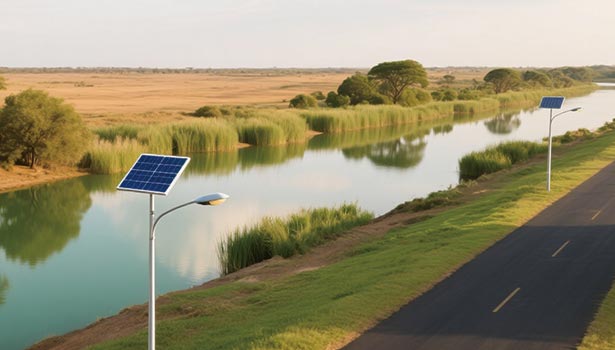
How do Solar Street Lights Perform in Africa's Extreme Temperatures?
Heat Resistance of Solar Panels in African Climates
In sub-Saharan Africa, where summer temperatures often exceed 40°C, modern solar panels are made of temperature-resistant photovoltaic materials: monocrystalline silicon panels maintain over 80% efficiency at 85°C, and nano-coated heat dissipation technology was applied to street lights in Dakar, Senegal, to reduce panel temperatures by 12°C. These technological innovations solve the problem of high temperatures in Africa. These technological innovations solve the problem of efficiency degradation in high-temperature environments and ensure that solar panels can still generate electricity stably under the harshest climatic conditions in Africa.
Battery Performance in Hot African Environments
|
Battery Type |
Operating Temperature Range |
Typical Application Regions in Africa |
|
LiFePO₄ Battery |
-20℃ to 60℃ |
Kenya, South Africa |
|
Ternary Lithium Battery |
-10℃ to 55℃ |
Ghana, Nigeria |
|
Lead-Acid Battery |
0℃ to 45℃ |
Some low-cost projects |
The street lighting project in Kampala, Uganda, utilizes lithium-ion battery packs with temperature-controlled fans that maintain 90% charge/discharge efficiency in a 40°C environment and last up to three nights. This customized design for high temperatures ensures the reliability of the battery system in Africa's complex climate and avoids the shortened lifespan of conventional batteries due to overheating.
Nighttime Temperature Fluctuations and Light Output
The temperature difference between daytime and nighttime in the African desert region can be more than 20°C. The intelligent controller protects the lighting through a dual strategy: the temperature compensation function automatically raises the output voltage at night when the temperature is low, avoiding the battery's “pseudo-loss of power”; and the time-darkening technology, such as that used in the Nairobi street lights, automatically lowers the luminance to 50% after 23:00, which is not only energy-saving, but also copes with the battery efficiency degradation in the low-temperature environment.
This intelligent control makes the street light to be more efficient. This kind of intelligent control enables street light systems to adapt to Africa's unique climatic characteristics, maximizing energy efficiency while ensuring lighting effectiveness.

How do Solar Street Lights Cope with Varying Sunlight Conditions in Africa?
Efficiency of Solar Panels in Different African Regions
The geography of Africa is so different that the selection of solar panels needs to be adapted to the local conditions: equatorial regions (e.g. Congo) use high-efficiency monocrystalline silicon panels (conversion efficiency 22%+) to cope with the lack of light during the rainy seasons, while semi-arid regions (e.g. Sudan) use sand-resistant polycrystalline silicon panels with tilt-adjusting mounts to maximize sunlight reception. This differentiated approach ensures that solar systems are geographically adaptable from rainforests to deserts in Africa.
Energy Storage Solutions for Cloudy Days
The project in Addis Ababa, Ethiopia, is configured with a “3+2” storage model: 3 days of standard storage for nighttime lighting in normal weather, and 2 days of emergency storage to activate energy-saving modes during consecutive cloudy days, with brightness reduced to 30% to maintain basic lighting. This flexible energy storage design effectively solves the problem of power supply fluctuation caused by seasonal rainfall in some parts of Africa, and ensures the continuous operation of the street light system.
Adaptive Lighting Technologies for Energy Conservation
The highway street lights in Cape Town, South Africa, use a three-stage dimming logic: 100% brightness during peak hours from 20:00 to 23:00, down to 50% brightness during peak hours from 23:00 to 05:00, and back to 80% brightness during morning commuting hours from 05:00 to 07:00, which is coupled with motion sensors to instantly restore 100% brightness when vehicles are detected, saving 40% of energy compared to fixed brightness mode. This solution saves 40% energy compared to the fixed brightness mode. This intelligent dimming based on traffic flow and time period not only meets the actual lighting demand, but also realizes the precise use of energy.
What Challenges do African Cities Face in Implementing Solar Street Lights?
Initial Investment Costs
Solar street lights have become an ideal choice for improving lighting conditions in Africa by virtue of their green and energy-saving advantages, but the high initial equipment procurement and installation costs have become a “roadblock” to their promotion. In the face of this dilemma, African countries actively innovate and explore differentiated financing paths. Rwanda, with the help of the World Bank special loan, quickly launched 100,000 solar street light project, with international capital injection as the fulcrum, rapid promotion of urban and rural road lighting system of low-carbon transformation, for large-scale infrastructure upgrading to provide a model.
In Nigeria, another way is to use public-private partnership (PPP) mode to solve the financial problems. Local enterprises are responsible for the project cycle of investment, construction and operation and maintenance, the government through the signing of long-term service procurement agreement, in the form of installment payment for the purchase of lighting services. These diversified financing options not only revitalize social capital, but also reduce the short-term pressure on the treasury and achieve a balance between public service provision and commercial efficiency, providing replicable market-based solutions for other regions.
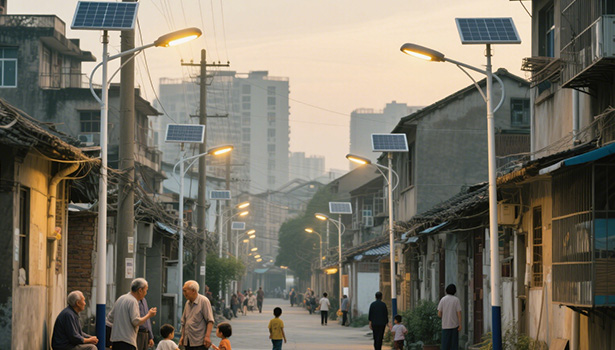
Maintenance and Technical Expertise
When dealing with the shortage of technical talents for solar street light operation and maintenance, Africa has adopted the strategy of localized talent training to break the situation. Through targeted short-term training courses, the company systematically teaches professional skills such as battery maintenance, equipment overhaul and troubleshooting, so as to quickly cultivate local technical talents.
After completing the course, the personnel form operation and maintenance teams or cooperatives, forming a localized service network to achieve timely response and efficient maintenance of equipment in the surrounding areas. This model not only reduces the cost of relying on external technical support, but also significantly improves the efficiency of equipment operation and maintenance, effectively eases the technical bottleneck in the operation and maintenance of solar street lights, and provides a reliable guarantee for the long-term and stable operation of related infrastructure.
Vandalism and Theft
The slums of Nairobi, Kenya, have adopted a “triple protection” system: physical protection using steel plate welding battery boxes and bolts built-in anti-demolition design, electronic tracking of each light installed GPS module to realize the abnormal movement of the automatic alarm, the community co-management level of hiring local young people to serve as “street light housekeepers”, with a monthly salary equal to that of the equipment. The community co-management level employs local youths as “streetlight stewards”, with their monthly salary linked to the equipment's completion rate. This combination of technical protection and community involvement has significantly reduced the incidence of theft and vandalism.
Real-World Examples: Success Stories from Africa
Kenya: Solar Lights in Rural Areas
In Kenya's Marsabit County, where electricity coverage is less than 30 percent, the installation of solar street lights has made a significant difference: nighttime school sessions have boosted schoolchildren's grades by 25 percent, and nighttime medical posts in nomadic communities have cut emergency response times from four hours to one. These changes have not only improved the quality of life for local residents, but also demonstrated the potential of solar street lights to improve education and healthcare.
South Africa: A Step Toward Sustainable Cities
Cape Town's “Smart Street Lights” project has become a benchmark for smart cities in Africa by integrating five functions: solar power, 5G micro-base stations, environmental monitoring (PM2.5, noise), charging piles, and emergency broadcasting, with an annual carbon reduction of 12,000 tons. The project proves that solar street lights can be used as an infrastructure platform for urban intelligence, providing support for intelligent transformation in the process of urbanization in Africa.
Ghana: Fighting Crime with Smart Lighting
Data from the transformation of Accra's city center show that nighttime robberies dropped from 42 to 25 per month, night market stalls increased from 30 to 70 and created 200+ jobs, and residents' nighttime travel safety scores increased from 3.2/10 to 7.8/10. These data demonstrate the combined benefits of solar street lights in improving public safety, activating the nighttime economy, and enhancing community cohesion.
From technical adaptability to economic feasibility, from safety improvement to community development, solar LED street lights have demonstrated all-round advantages in Africa. As the cost of technology continues to decline, the localized operation and maintenance system is gradually improved, as well as the importance of sustainable development in African countries continues to increase, solar street lights will certainly become the mainstream choice for street lighting in Africa, lighting up a green and intelligent future for the urbanization process of this continent.

